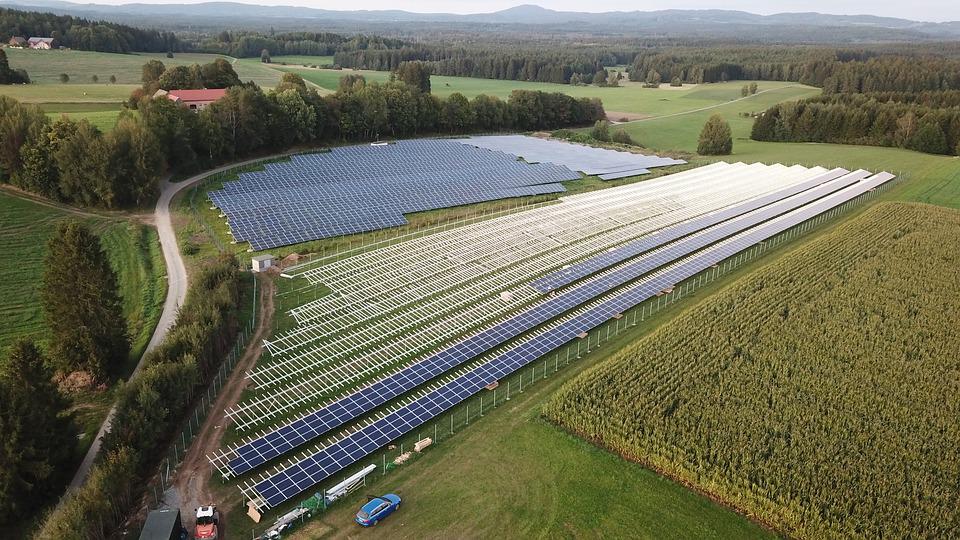A bicommunal photovoltaic power plant would increase cooperation in the energy field and build trust, Mario Nava, the Director-General of the European Commission’s Structural Reform Support Service (DG REFORM) told Cyprus News Agency (CNA) in an interview published on Saturday.
Nava’s portfolio included measures to support the Turkish Cypriot community and he is moving to the Directorate-General for Employment, Social Affairs and Inclusion (DG EMPL).
Asked about progress regarding a proposal for the construction of a bi-communal photovoltaic park in the buffer zone, Nava said that “I am pleased that the first step, an EU-funded pre-feasibility study for this project, has been completed” adding that he has presented the findings of the study to the negotiators of the two communities at the end of February.
He explained that the next step now is for the two communities to decide on the location, agree to the proposed technological and technical solutions, and decide on the level of investment from each community, the ownership and electricity-sharing ratio.
“We expect to hear back from the negotiators soon. Should there be any diverging views and concerns, the Commission is ready to help find solutions”, he added.
Speaking about the benefits of its creation for the two communities, Nava said that a bicommunal photovoltaic power plant would be very valuable. Most importantly, he continued, it would increase cooperation in the important energy field and build trust adding that it would also help “green” the electricity networks of the two communities and re-integrate them to some extent.
“We also hope that it would inspire more solar energy projects, for which there is huge potential in Cyprus due to the sunny weather. So far there is no solar power plant in the island with a storage facility, which is important to ensure electricity supply during after-sun hours. The project is breaking new ground in this regard”, he mentioned.
Referring to the projects the European Union (EU) supports through the programmes for Turkish Cypriots, Nava said that the EU’s key instrument to support the Turkish Cypriot community is the aid programme. He explained that the name specifically mentions the Turkish Cypriot community and the stated objective of this programme is to facilitate Cyprus’ reunification.
Mario Nava stressed that the aid programme clearly contributes to paving the way for reunification and, as independent evaluations of the aid programme have concluded, it has kept the reunification perspective “alive.”
Asked about progress in the Turkish Cypriot community about its preparedness vis-a-vis the implementation of the acquis communautaire in case of reunification, Nava noted that the Commission has undertaken efforts to support the Turkish Cypriot community in implementing the standards, in line with the EU acquis.
He explained that since 2006, when the aid programme was launched, “we have mobilised more than 260 EU experts who have worked with the Turkish Cypriot local bodies to implement EU standards in 15 different sectors, such as agriculture, health, environment, metrology, statistics, and market surveillance”. These experts, he continued, have also helped draft over 240 legal texts aligned with the acquis.
However, he continued, the Commission would need to undertake a comprehensive assessment to obtain a full picture of alignment.
As he pointed out “this might happen once Cyprus is closer to reunification, as it was done during the last round of negotiations in 2015-2017. Re-establishing the Ad-hoc committee on EU Affairs would be one of the steps to reinvigorate this process.”
Speaking about the trade through the Green Line, Nava noted that Green Line increases trust and cooperation and brings the two communities closer together, thus paving the way for Cyprus reunification.
He indicated that this year marks the 20th anniversary of the EU Green Line Regulation and said that Green Line trade is “the highest it has ever been” explaining that in 2023, Green Line trade amounted to over €16 million. “When I started at DG REFORM, it was around €4m to €5m per year, so it has almost quadrupled”, he noted.
“I am proud that the Commission has contributed to this increase. We have promoted Green Line trade among Turkish Cypriot producers and assisted them in complying with EU standards, and we have advocated for more products to be admitted to Green Line trade. We also opened the EU One Stop Shop last year, which provides support and advice to businesses from both communities interested in Green Line trade”, he added.
Speaking about other initiatives by the EU to bring the two communities closer, Nava said that the Commission is currently focusing on Green Line trade and the implementation of the Halloumi/Hellim PDO scheme, adding that “we would be happy to support other confidence-building measures that the two communities would agree and which would facilitate Cyprus’ reunification.”
In a question regarding the biggest challenge he faced during his duties in Cyprus, Nava said that “the biggest challenge is often to make possible for the dialogue to start on many matters be them small or big” adding that “still, we have managed to make tangible progress in several areas, which means that through dialogue, perseverance and showing mutual benefits, you have a chance to overcome this.”







Click here to change your cookie preferences